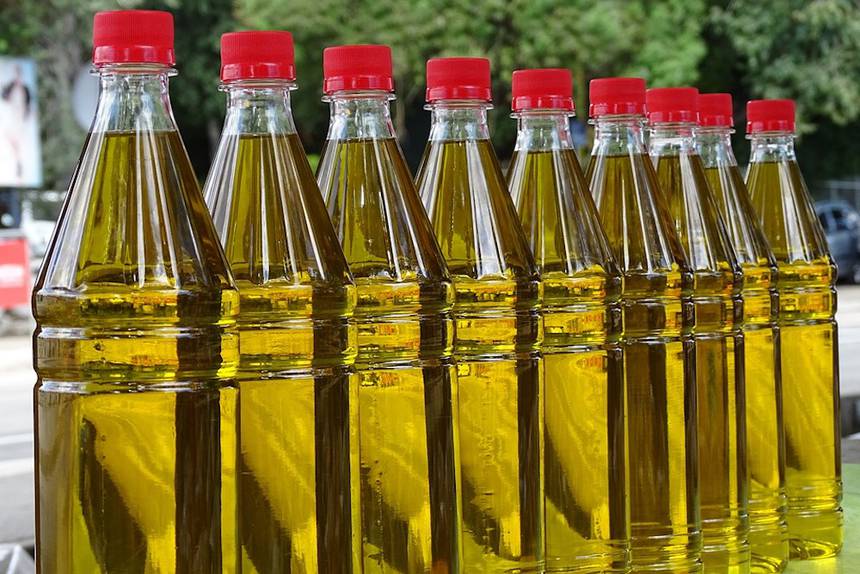When the harvest has been poor, rates of adulteration rise.
2018 was a tough year for olive oil producers. Global production dipped by over 5 percent, due to bad weather and disease. Italy, Greece, Turkey, Palestine, Argentina, Portugal, and Tunisia saw the biggest drops. California and Portugal had rough years, too.
While such agricultural problems may seem distant, this does have a direct effect on consumers. When the harvest is poor, retail prices skyrocket (they’ve gone up 40 percent in Canada this year) and the likelihood of olive oil fraud increases. Producers cut the pure olive oil with cheaper oils like palm, sunflower, or canola to stretch it further.
Not only does this mislead people as to what they’re purchasing, but it poses allergy risks. In the words of the Canadian Food Inspection Agency’s (CFIA) deputy chief food safety officer, Aline Dimitri: “The real problem is, what if it’s cut with peanut oil, and someone is allergic to it and they do not know it is in there?”
The CFIA has announced a crackdown on olive oil fraud this year because of the poor global harvest. A new law took effect in January that gives the agency broader powers, and it is now collecting nationwide samples and conducting laboratory tests to detect adulteration. When evidence of tampering is found, the agency “can have the product relabelled, force an importer to hold the product, or recall a product from store shelves entirely, among other things.”
The lab tests, however, aren’t as straightforward as you might think. As Jon Henley explained in the Guardian,
“The chemical tests that should by law be performed by exporters of extra virgin oil before it can be labelled and sold as such can often fail to detect adulterated oil, particularly when it has been mixed with products such as deodorized, lower-grade olive oil in a sophisticated modern refinery.”
While food inspection agencies do their work behind the scenes, consumers can get the most value for their dollar by learning to identify better-quality olive oils. The first step is to observe the harvest date, which Michael North, an olive oil expert, says is “not an absolute guarantee of quality, but half the battle.” Fresher is always better, and don’t get anything more than two years old.
Note that harvest date is different from ‘bottled on’ date, which is meaningless. Olive oil could sitting in a tank for a year prior to bottling.
The more specifics on the bottle, the better. Always go for extra-virgin because, without it, you’re certain to get a lower-grade product. Third-party certification is a good sign too. Look for a place of origin, location of pressing, or the name of an estate or producer. This additional information means it’s more likely to be genuine. From Epicurious’ guide to spotting fake olive oil,
“Getting even geekier, if you see the free fatty acidity level, or FFA, listed (which you probably won’t with mass-market brands), that’s a great sign. Typically, only high-quality producers bother listing it. An excellent oil will have an FFA of 0.2 percent or lower.”
Weigh flavor over color, and try to buy olive oil from vendors that let you taste it first. Avoid anything that tastes “mouldy, cooked, greasy, meaty, metallic, and cardboard.” Go for a grassy, peppery, green, bright, fresh taste instead.
Epicurious recommends choosing Australian or Chilean olive oils, if given the chance. “Australia has the most strongest standards and a highly advanced testing system, and neither country mixes in carryover oil from the previous harvest.”
If you live in Canada and think you bought a bottle of fake oil, get in touch with the CFIA. They’re welcoming tips this year.
